Art & Exhibitions
5 Artists You Must Not Miss at the 10th Berlin Biennale
The exhibition challenges Eurocentric assumptions, Germany’s reputation for tolerance and includes a brief history of Microhouse music.
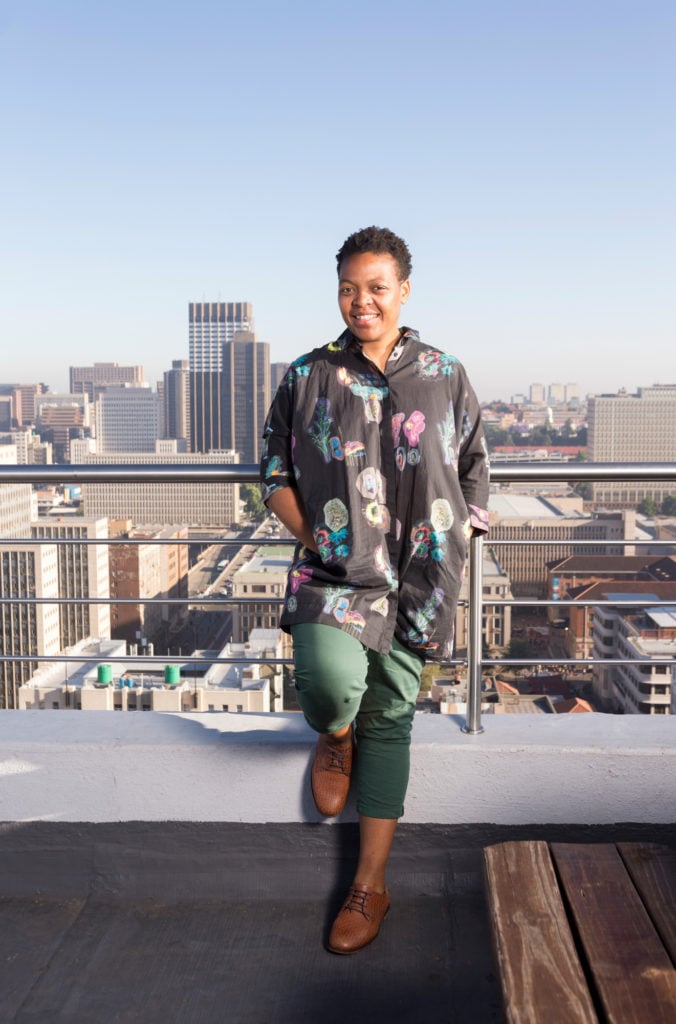
The exhibition challenges Eurocentric assumptions, Germany’s reputation for tolerance and includes a brief history of Microhouse music.

Hili Perlson

The 10th Berlin Biennale opened to the public on Saturday (June 9) in five locations around the city with the title “We don’t need another hero,” and a promise—following a year of mega art shows in Germany—to do things differently. Instead of a sprawling show presenting works by more than a hundred artists, this year’s edition is commendably compact. However, the insistence of the curator Gabi Ngcobo and the curatorial team of Nomaduma Rosa Masilela, Serubiri Moses, Thiago de Paula Souza, and Yvette Mutumba, on keeping their concept vague and taking visitors on “a journey of inhabiting a grammar towards the unknown,” is nothing new. In fact, a lot of the vocabulary used in the curatorial statements echoes ideas about unlearning and undoing what we’ve heard from the team of documenta 14.
The most welcome difference is the modest size of this year’s Berlin Biennale, or BB10, with 46 participating artists and collectives and only five venues. The show’s €3 million ($3.5 million) budget has been well spent on 30 new commissions.
The reduced artist list (down from more than 120 in 2016) allows for a generous hang. Ample space is given for large-scale installations to unfold. What is more, many of the artists are not represented by a single piece, but rather by a larger project or a body of work. Some are even given their own rooms, or are showing a series of works across more than one venue. There is also, importantly, no preference given to one medium over others, so that performance and painting coexist on equal grounds.
Refreshingly, beauty at BB10 is by no means a bad word. But the lack of contextual information risks superficial readings, like focusing on the fact that many of the artists are “unknown” or “under-represented” in the art world. After all, why should art strive to be understood as something global, and artists as global players? Giving more tools to the viewer to relate to the local contexts addressed and represented in many of the pieces would enhance viewers’ engagement. And so, left to fall back on what each viewer brings with them, some of the stronger moments of this biennial were provided by the works that contextualize the locality of this undertaking—in Berlin, within German society—and probe Germany’s image of itself as a country of immigration and pluralism at a time when right-wing nationalism and xenophobia is on the rise.
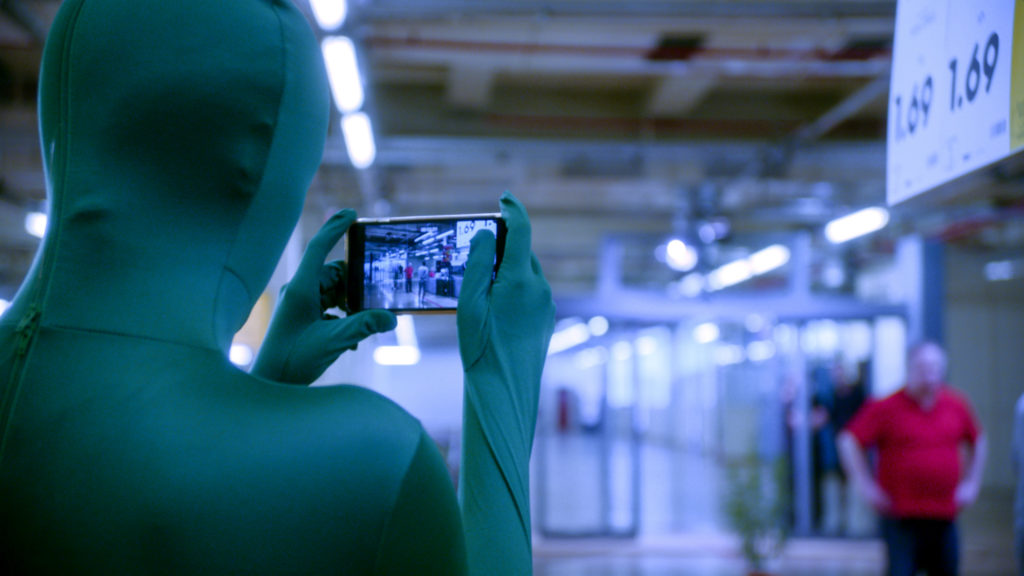
Mario Pfeifer Again / Noch einmal (2018). Video still, courtesy of Mario Pfeifer, KOW, Berlin, copyright 2018 VG Bild-Kunst, Bonn.
In Again / Noch einmal (2018), a two-channel video installation commissioned for the biennale, the German artist Mario Pfeiffer revisits a case that split German public opinion in 2016 when four men went on trial for beating and tying up an Iraqi asylum seeker with mental health problems and epilepsy, who they alleged was threatening a supermarket cashier. The men claimed their actions were a display of “civil courage,” a loaded term that has haunted German society since World War II. Its use by a group of vigilantes and their supporters is particularly cynical. The victim never got a chance to testify before a court dismissed the case. Neglected by the officials responsible for his well-being, his frozen body was found in the woods one week before the trial.
Pfeiffer’s work raises questions overlooked by the court, regarding the violence he suffered, and that no one in the system was ever held accountable for the man’s death. The strength of the work, however, is not in the reenactment of the events, but in the series of interviews with German citizens, most of whom have themselves immigrated to East Germany in the 1990s. (The case took place in Saxony, a former East German state.) Presented with the details of the events, they unanimously conclude that the assault and the man’s death give testimony to German xenophobia and racism.
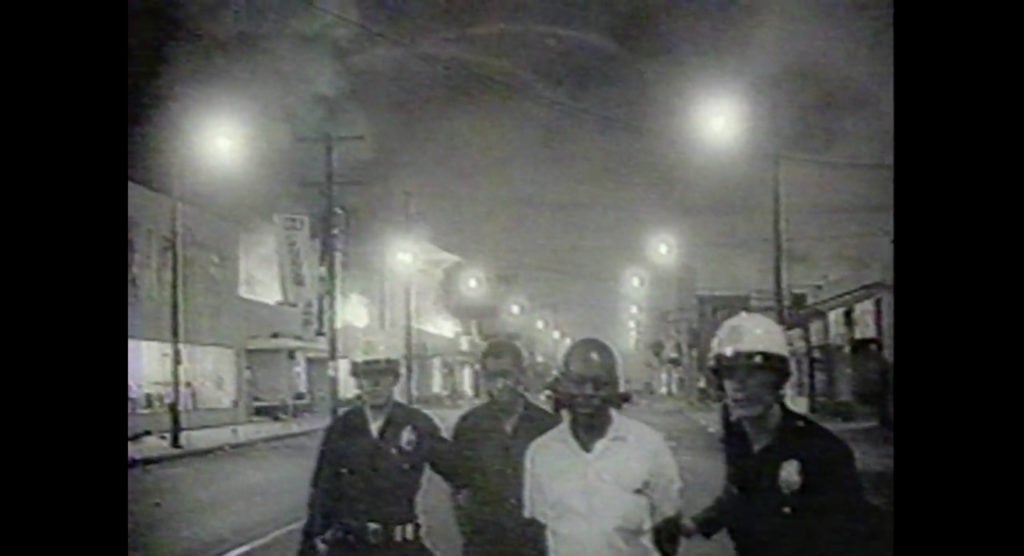
Tony Cokes, Black Celebration (1988). Video still, courtesy the artist, Greene Naftali Gallery, New York, EAI, New York.
If you only get to see one thing in the Berlin Biennale let it be the room dedicated to 14 works by the US artist Tony Cokes. Installed in the basement of the ZK/U, otherwise used as a club, the series of videos projected on TV screens includes a dozen pieces that go against what he calls the “representational regime of image and sound” used in mainstream filmmaking.
Cokes pairs music by the likes of Morrissey and Gang of Four with texts culled from political speeches and critical theory. At the heart of the installation, two longer works are projected on a big screen, with soundtracks that evoke the space’s nighttime use. In Black Celebration, (1988) newsreel footage from riots in 1960s America is coupled with music by the Canadian electro-industrial band Skinny Puppy, and interspersed with texts by Guy Debord and others, as well as song lyrics from the titular Depeche Mode hit, offering a reading of the civil unrest as a rebellion against the reign of commodity. In the 31-minute piece Mikrohaus, or the black atlantic? (2006–08), Cokes examines the links between minimal electronic music—a genre associated with the Cologne and Frankfurt scenes—and race. Texts by the music critic Philip Sherburne, who coined the term Microhouse, form the basis of the video, juxtaposing quotes from interviews with German techno and house producers such as Kompakt’s Thomas Brinkmann. The words appear on the screen in white letters set against a black background—and comments by Detroit techno artists appear in black on white. The soundtrack is composed by Microhouse “hits” making it hard to resist moving to the beat. (Cokes’s works have been described as theory that you can dance to.) The piece is essentially critical, looking at how black pop cultural forms are processed in global contexts, and the hybrids that they spawn. But there is an ambiguity in the piece as well, and an appreciation of the German minimal genre that goes beyond a reading of it as mere appropriation. In fact, Cokes will be hosting three club nights at ZK/U throughout the summer where minimal electro DJs, as well as UK Dubstep DJs, will play sets.
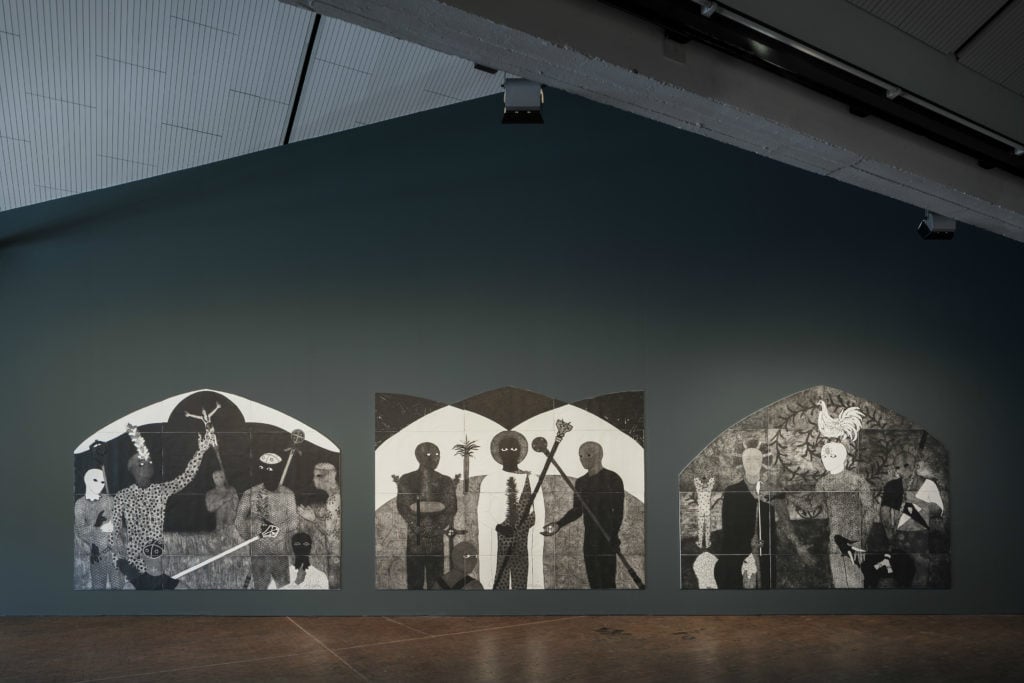
Belkis Ayón, exhibition view of La consagración at the 10 Berlin Biennale. Lent by the Collection Ludwig-Museum at the Russian Museum, St Petersburg. Photo by Timo Ohler.
The late Cuban artist Belkis Ayón’s stunning black, white, and gray collographs, presented in a generous hanging at the ADK, are based on explorations of the secretive Afro-Cuban religious fraternity known as Abakuá. Ayón inserted female figures into the all-male society using allegories of the religion’s mythological goddess, Sikán. As a printmaker, Ayón settled on one of the most labor-intensive forms of the medium, collography, and mastered it to great effect, producing richly textured albeit chromatically restrained iconographies. The artist created the dozen arresting large-scale collographs and circular prints shown in the biennial between 1991 and 1998. A retrospective dedicated to the work of the artist who committed suicide in 1999, aged 32, was on view in several museums across the US in 2017. (The shows prompted the New York Times to publish a belated obituary on the artist, in its series “Overlooked,” earlier this year.) The bewitching images feature mouthless figures with piercing, almond-shaped eyes engaging in occult rituals set in nature. The centerpiece is the triptych La Consagracion I, II, III (1991), which depicts a ceremony in progress. While Ayón herself was an atheist, she was intrigued by and even saw a reflection of herself in the symbolism of the goddess Sikán, who, according to myth, betrayed a great secret to a leader of a rival tribe, for which she was punished with a death sentence.

Natasha A. Kelly, Milli’s Awakening (2018). Video stills (collage), courtesy of the artist.
Natasha A. Kelly’s video work, Milli’s Awakening (2018), which has been commissioned for the biennial, is a 45-minute-long, black-and-white film, in which eight female Afro-German artists and curators speak about everyday racism, how they position themselves, and the frictions and doubts that arise from the lack of diversity in the German cultural sector. The work’s content is key here, the aesthetic and editing decisions less so—the decision to use black-and-white film feels particularly forced. The work’s title is a reference to the German expressionist Ernst Ludwig Kirchner’s 1911 painting Sleeping Milli, which depicts a black female nude. Kelly argues that the model is eroticized, exoticized, and silenced. The artist sees her work as an addendum to a book published in 1986 by three Afro-German female activists: Katharina Oguntoye, May Opitz (later May Ayim), and Dagmar Schultz. Called Showing Our Colors: Afro-German Women Speak Out, the book was the first scholarly work dedicated to Afro-German history, and included contemporary accounts, many of which related personal stories of finding one or both biological parents. Women who have grown up in Germany since the book’s publication speak out in Kelly’s film.
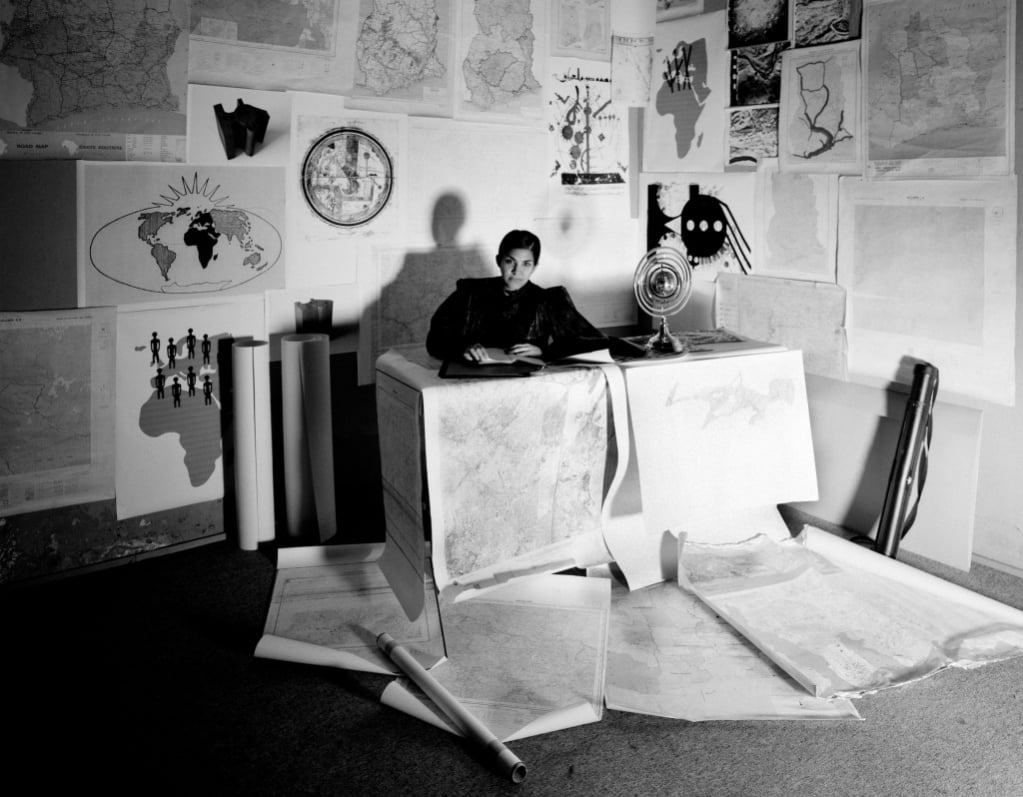
Heba Y. Amin, The Master’s Tools I (2018), courtesy of the artist.
The Egypt-born, Berlin-based artist Heba Y. Amin is perhaps familiar to a wider audience through her involvement in sneaking critical messages into an episode of Homeland, which was filmed outside of Berlin. She graffitied ironic messages on the wall of the set. Here, she is showing the installation Operation Sunken Sea (2018) that picks up the grandiose, unrealized plans devised by the German architect Herman Sörgel in the 1920s to drain the Mediterranean and connect Europe with Africa. (Various versions of the proposal existed throughout the 19th and 20th centuries, including a mega-plan to flood the Sahara, presented by different colonial powers.) Amin inserts herself into a reenacted photograph of Sörgel, surrounded by maps and plans, in a work titled The Master’s Tools. On the wall behind her there’s a black symbol that is repeated in the installation as a sculpture, a wallpaper pattern, and an emblem. It is a map of the Mediterranean that the artist found in 10th century Islamic manuscript, where the Strait of Gibraltar forms the center of orientation. This reversal of the European perspective is also the basis for a speech Amin delivers as a fictional political figure who is bringing up the proposal yet again, this time from the point of view of benefiting the African continent. She highlights how the connected continents will at last bring justice to the looted people of Africa, as well as end terrorism and the migrant crisis. Her utopian script is entirely plagiarized from speeches of various dictators including Mussolini, as well a contemporary political leaders, including the Turkish President, Recep Tayyip Erdoğan. While problematic, the piece is thought-provoking. It successfully exposes and destabilizes Eurocentric attitudes and the rhetoric of power, something that could be said for to the entire Berlin Biennale.
“We don’t need another hero,” 10th Berlin Biennale, June 9 through September 9, various venues, Berlin.